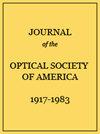Learning A Simulation-based Visual Policy for Real-world Peg In Unseen Holes
Journal of the Optical Society of America and Review of Scientific Instruments
Pub Date : 2022-05-09
DOI:10.48550/arXiv.2205.04297
引用次数: 0
Abstract
This paper proposes a learning-based visual peg-in-hole that enables training with several shapes in simulation and adapting to arbitrary unseen shapes in the real world with minimal sim-to-real cost. The core idea is to decouple the generalization of the sensory-motor policy from the design of a fast-adaptable perception module and a simulated generic policy module. The framework consists of a segmentation network (SN), a virtual sensor network (VSN), and a controller network (CN). Concretely, the VSN is trained to measure the pose of the unseen shape from a segmented image. After that, given the shape-agnostic pose measurement, the CN is trained to achieve a generic peg-in-hole. Finally, when applying to real unseen holes, we only have to fine-tune the SN required by the simulated VSN + CN. To further minimize the transfer cost, we propose to automatically collect and annotate the data for the SN after one-minute human teaching. Simulated and real-world results are presented under the configuration of eye-to/in-hand. An electric vehicle charging system with the proposed policy inside achieves a 10/10 success rate in 2-3 s, using only hundreds of auto-labeled samples for the SN transfer.学习一种基于仿真的视觉策略,用于现实世界中看不见的洞
本文提出了一种基于学习的视觉钉孔算法,该算法能够在模拟中对多个形状进行训练,并以最小的模拟对真实代价适应现实世界中任意看不见的形状。核心思想是将感觉-运动策略的泛化与快速适应感知模块和模拟通用策略模块的设计解耦。该框架由分段网络(SN)、虚拟传感器网络(VSN)和控制器网络(CN)组成。具体来说,训练VSN来测量分割图像中未见形状的姿态。之后,给定形状无关的姿态测量,CN被训练以实现通用的钉入孔。最后,当应用于真实的看不见的洞时,我们只需要微调模拟VSN + CN所需的SN。为了进一步降低转移成本,我们建议在人工教学一分钟后自动收集和标注SN的数据。在眼对手的配置下给出了模拟和实际结果。采用该策略的电动汽车充电系统在2-3秒内实现了10/10的成功率,仅使用数百个自动标记的样品进行SN转移。
本文章由计算机程序翻译,如有差异,请以英文原文为准。
求助全文
约1分钟内获得全文
求助全文

 求助内容:
求助内容: 应助结果提醒方式:
应助结果提醒方式:


